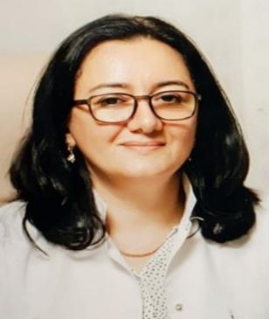Title : Perinatal markers of early age neurodevelopmental disorders
Abstract:
Perinatal hypoxic-ischemic brain injury is a major cause of neonatal death and long-term disability. Approximately 15–25% of newborns with hypoxic-ischemic encephalopathy (HIE) die during the postnatal period, and surviving infants are at risk for the development of severe and permanent neuropsychological sequelae. The aim of our study was to investigate the levels of neurospecific injury and inflammation markers, and also some endothelial constricting and dilating mediators in preterm infants with hypoxic-ischaemic encephalopathy and prospectively evaluate the association between levels measured during the perinatal period and the diagnosis of neurodevelopmental disorders at 3 years of age.
This regional observational cohort study was conducted at the Azerbaijan Medical University, Baku, Azerbaijan, from 2011 to 2015, and comprised very-low-birth-weight infants admitted to the intensive care unit during the perinatal period. Blood concentrations of nitric oxide (NO), endothelin-1 (ET-1) and endothelial nitric oxide synthase (eNOS) were measured on days 1-3 and 5-7 of the neonatal period. Concentrations of neurospecific enolase (NSE) and antibodies against N-methyl-D-aspartate glutamate receptors (NR2-Antibodies) were measured in peripheral blood samples for detection of brain damage in the early neonatal period of life. The infants were divided in 3 different groups: those diagnosed with moderate-to-severe neurodevelopmental disorders or cerebral palsy were included in the first group; those with mild neurologic changes were in the second group; and children without evidence of neurological impairment were in the third group. The fourth group comprised controls. SPSS 22 was used for data analysis. Of the 62 participants, there were 8(12.9%) in the first group, 20(32.3%) in second, 14(22.6%) in third and 20(32.3%) in the control group. The results indicated that while eNOS expression was reduced, NO concentrations were increased in accordance with the severity of HIE (p<0.05). The statistically significant positive correlation between neuron-specific enolase (NSE) and NO/eNOS ratio could suggest that decreased synthesis of NO by endothelial sources is related to more severe hypoxic changes and neuronal injury. It was found that, in the presence of neonatal high concentrations of NO, early eNOS activity was insufficient in infants diagnosed with cerebral palsy later in life compared to neonates who did not show neurodevelopmental delays associated with HIE. No differences in concentrations of neuron-specific enolase and NR2-Antibodies were identified among infants with and without a subsequent diagnosis of neurodevelopmental disorders (p>0.05).
The association between depressed endothelial nitric oxide synthase activation and insufficient endothelin-1 synthesis in the early days of life of very-low-birth-weight infants might be one of the causes of more serious and irreversible injury of brain tissue.


